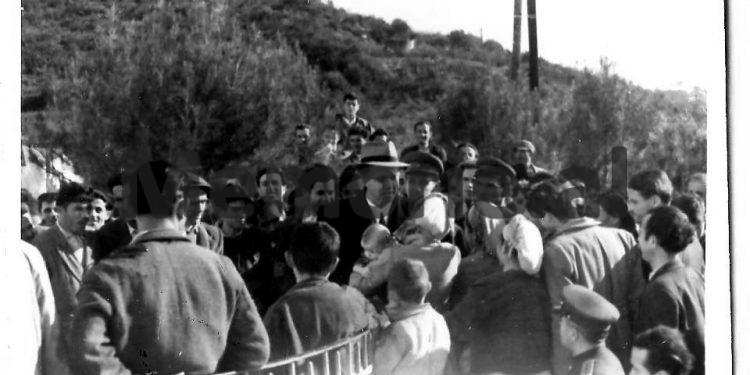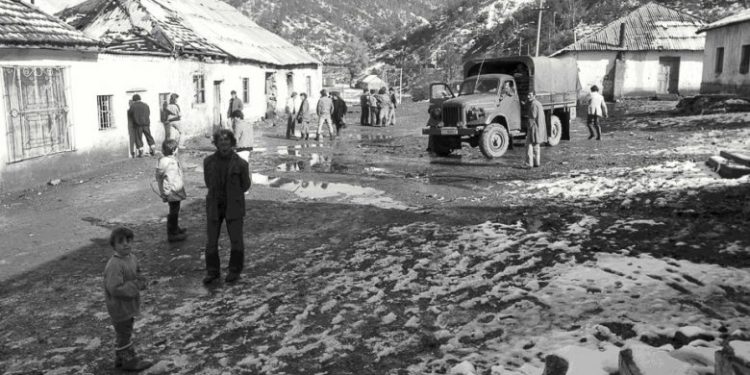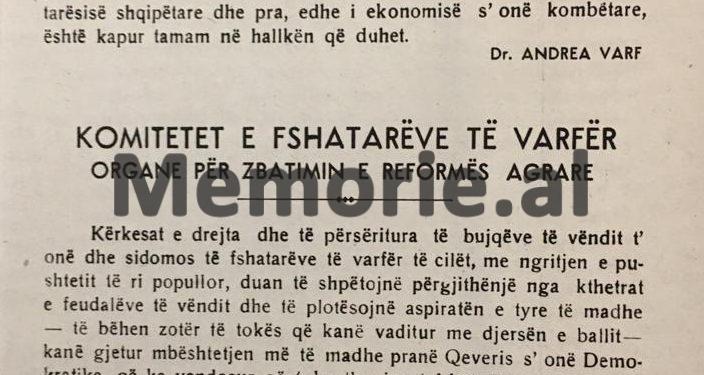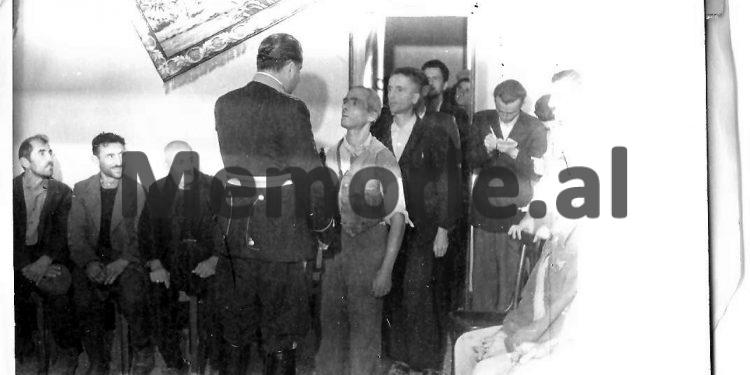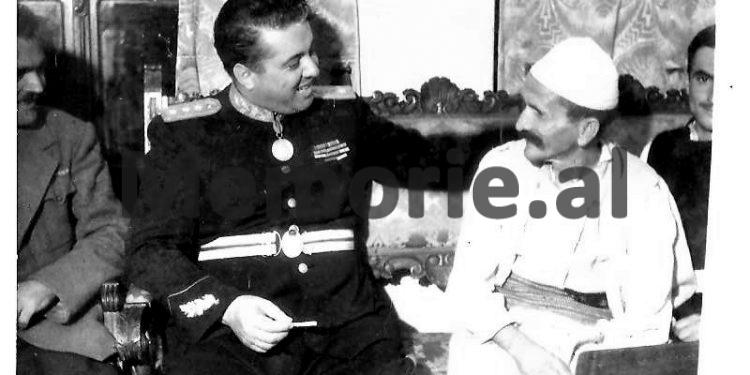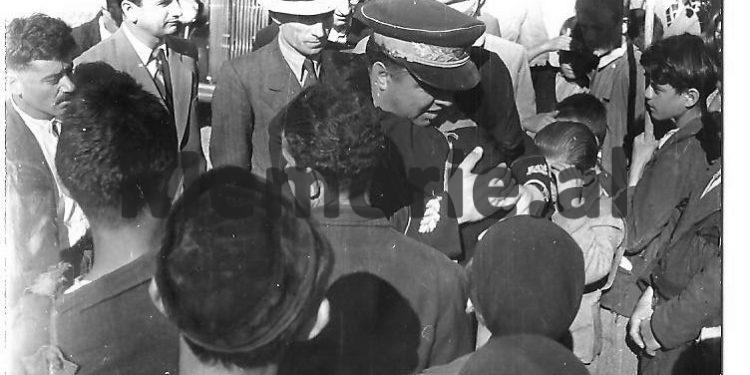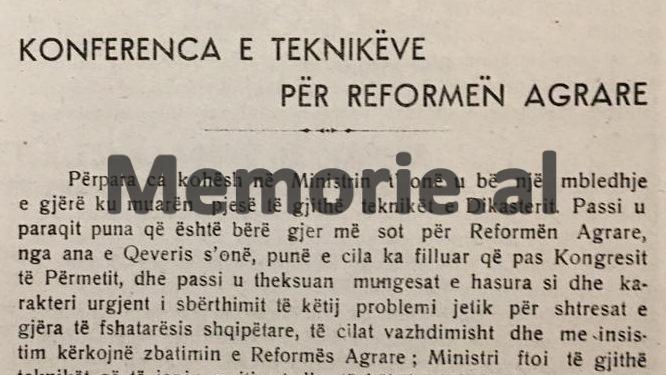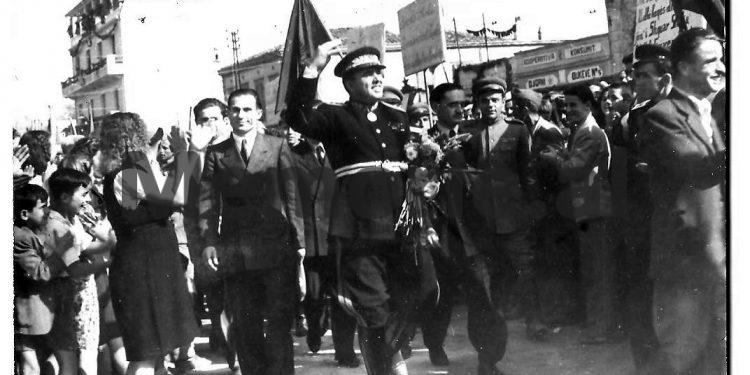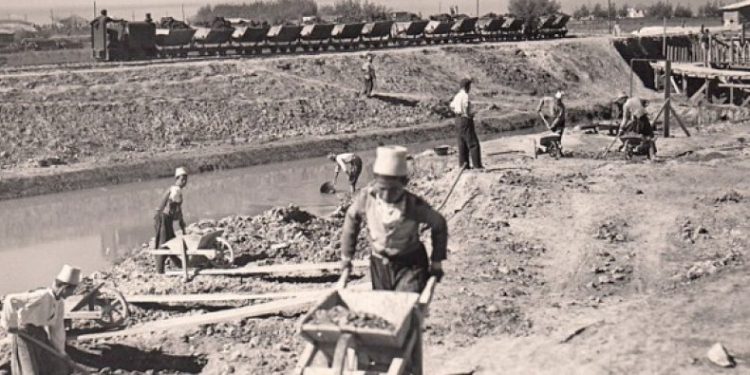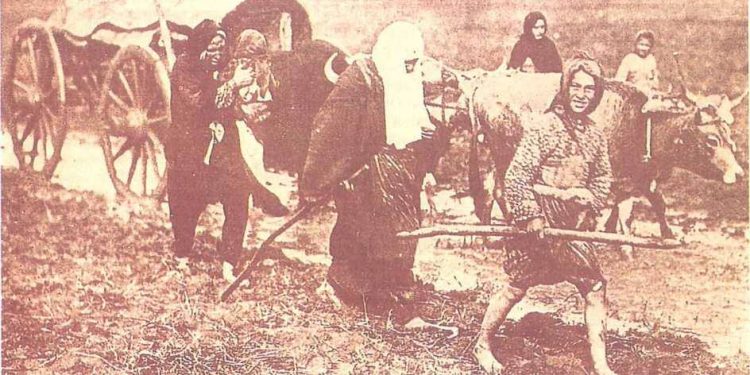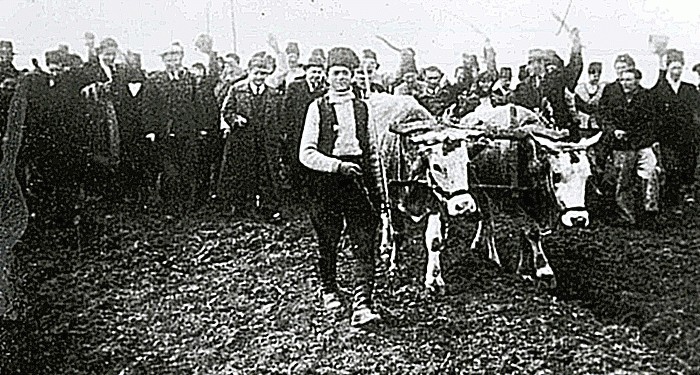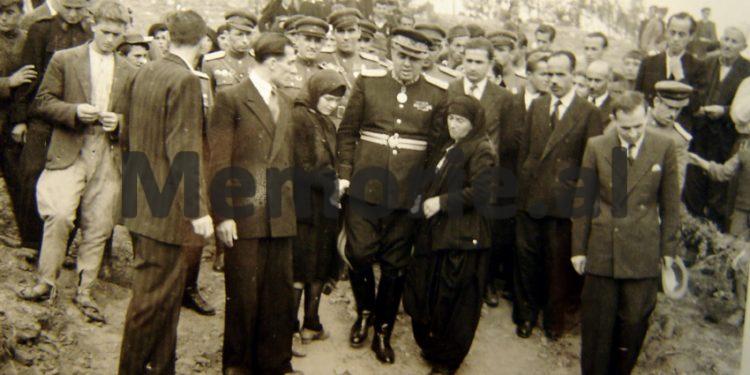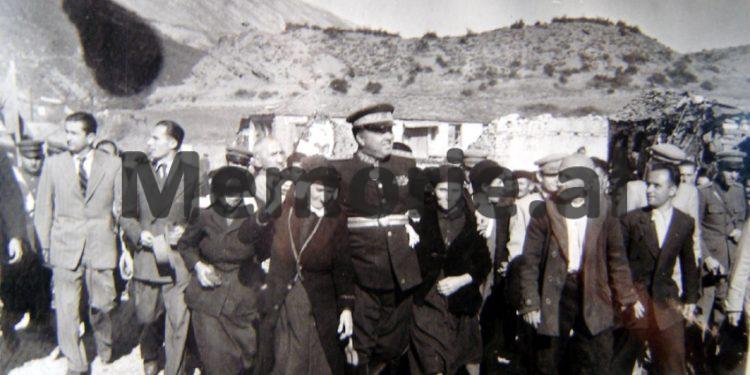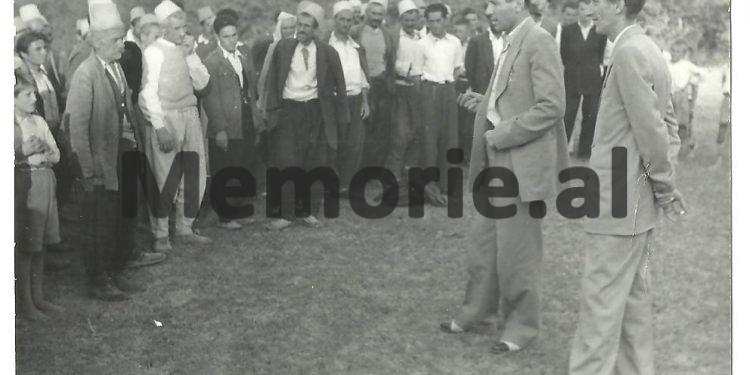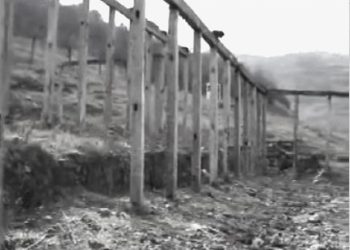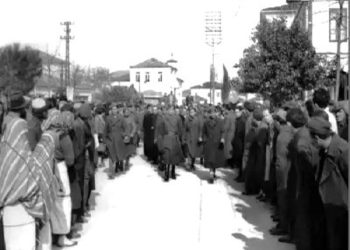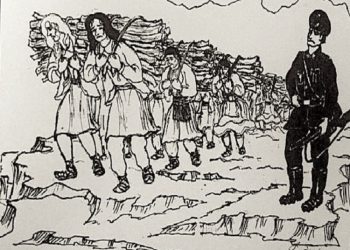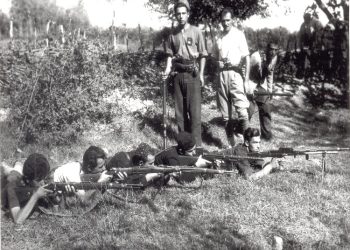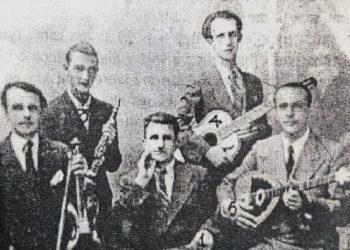Dashnor Kaloçi
Memorie.al publishes unknown documents with figures and facts, which shed light on the Agrarian Reform carried out by the communist government of Enver Hoxha in 1945-1946, with great help and assistance provided by Yugoslav specialists who were as advisors to the Ministry. of Agriculture and Forests led by Dr. Gaqo Tashko and Stavri Manjani, as well as any other department of the Albanian administration of that time. A brief history of that reform that was not fully realized by King Zog in the 1930s and the catastrophic consequences of the 1945 agrarian reform, which expropriated 172,659 ha without compensation land.
Since coming to power at the end of 1944, among many other promises, the communist government led by Colonel-General Enver Hoxha has declared one of its top priorities: Agrarian Reform. Which she had propagated since the Përmet Congress in May 1944, when the Anti-Fascist National Liberation Council took on the attributes of a Provisional Government. In this context, on August 29, 1945, the government of Prime Minister Enver Hoxha, announced the law on Agrarian Reform, which was supplemented by another annex, which was officially announced almost a year later, in May 1946. The Law on Agrarian Reform, as well as all its annexes, were drafted on the basis of suggestions and technical assistance from Yugoslav specialists, who, in addition to the Ministry of Agriculture and Forestry, were then attached to all ministries and departments of the Albanian state… While the Albanian side, in the working group for the drafting and implementation of that reform, engaged and worked until the end of it, the Minister of Agriculture, Dr. Gaqo Tashko, and Stavri Marjani, who was charged with the attributes of Director of Agrarian Reform. How was that reform considered by the official propaganda of the then communist government, what did the law draft to carry out that agrarian reform sanction, what was the help that the Yugoslavs gave for its implementation, how would the expropriation of land be done to the rightful owners? whom the ruling regime regarded as kulaks and landowners, how much land would be given to the peasants, and how much land would remain state property?
Government: “Agrarian Reform, the biggest news for the villagers”
The communist government of Enver Hoxha resonated with the proclamation of the Agrarian Reform in 1945, giving it a large space in all the propaganda means at its disposal and using Radio Tirana and the entire press (newspapers, magazines, bulletins). etc.), which she had at the time. In this context, in the magazine “Bujku” (Agricultural-Economic Magazine published by the Ministry of Agriculture and Forestry), October 1945, under the major title: “Agrarian Reform, the greatest news of rurality”, among others said: “Finally, the dream of the villagers is coming to life. Toast Agrarian Reform Law. The bondage relationship between latifundium owners and bakeries ends once and for all. There will be no more slaves in our land. What is the Agrarian Reform for the Albanian peasant? Everything. Agrarian reform is the basis, it is the foundation on which its entire economic, social and cultural future will be built. Agrarian reform provides the peasant with a life of honor and dignity, a human life. The Albanian peasant of Vurku and Myzeqe; of the Vrinonas, Vërlacs and Biçakçinjë çifliqs with friends, only today can he say that he is Albanian and human. Agrarian reform puts the pickaxe on the feudal system, wiping out great lives for life, the cause of misery and poverty, disease and greed, the cause of the calamities of all peoples. Without economic liberation, without the overthrow of feudalism, political liberation would be meaningless. Enver Hoxha’s government gave the floor to the people and kept it. Enjoy life, your land, your land, the land that does not accept patrons and tyrants, locals and foreigners”.
The Ministry of Agriculture prepared the laws and technicians for the Reform
Before the implementation of the Agrarian Reform, the Ministry of Agriculture and Forestry, which at that time had Dr. Gaqo Tashko (Deputy Minister was Haki Toska), in addition to the necessary legal framework, also prepared Albanian technicians and specialists who would work in offices and on the ground for the progress of that reform. Regarding this, there is an article published in the magazine “Bujku i Ri” of that time, where, among other things, it is said: department. After presenting the work done so far for the Agrarian Reform, by our government and after highlighting the shortcomings encountered, as well as the urgent nature of the breakdown of this vital problem for the broad strata of the Albanian peasantry, which constantly and insist on the implementation of Agrarian Reform; The Minister invited all technicians to give their suggestions and make suggestions about the main points proposed to make the Law on Agrarian Reform. All the main points of the Law on Agrarian Reform were vividly discussed. It was also stated how much land will be given to the owners who will be engaged in agriculture; how will çifliqs be considered, which are an integral part of the “condom” of many people. How will the pastures be considered that will not be returned to the land of bread, after the needs of the farmers for the pastures have been met; how the olive problem will be solved. What will be the attitude towards the lips of the State and those who were installed during the “Agrarian Reform” of Zog’s time, but who have abandoned the lands. Which lands are excluded from expropriation; who benefits from the division of lands; how the lands are compared and how much land of bread and pasture will be given to each peasant. What will be done to cover the costs of expropriation; what contribution will the State contribute to meeting these costs, etc. ” At that meeting, which took place for four days in a row (from 1 to 4 July 1945), according to the directives given by the government, a commitment was made for the Agrarian Reform to be completed within the set deadline, within November 1946…
Minister, Tashko and Director of Reform, Marjani, at the ceremony organized in Lushnje
After drafting the necessary legal framework which was approved by the Presidency of the General Council Nac-Liberator (at that time there was no Parliament), which was a legislative body that in some way replaced the Parliament, the Albanian government declared the implementation of Agrarian reform by holding occasional ceremonies in almost all districts of the country. One of these ceremonies was the one held on September 4, 1945 in the villages of Lushnja district, which was attended by the Minister of Agriculture and Forestry, Dr. Gaqo Tashko, who was accompanied by some of the main leaders of that ministry. In his speech before hundreds of Mycenaean villagers and the party authorities and those of the local government, among others, Minister Tashko said: “Peasant friends and technical friends. I greet you with the great news of the Agrarian Reform that we are implementing today. You have all been lied to in the past, the promises of agrarian reform in Zog’s time were nothing but promises, and could not have been otherwise. Our democratic government is fulfilling its promises. One can be affected by these laws and major reforms, but even those few must understand once and for all that the common interest is above all, and therefore they must sacrifice something. The canal law gives the villagers the fate of the land. The law on the reduction of agricultural rents helps the villagers who were burned and burned in this war “. The report of the magazine “Bujku i Ri”, which extensively reflects the ceremony held on the outskirts of the city of Lushnja, states, among other things: give the people exactly, and the efforts they must make to understand and enforce these laws. The Minister did not forget to emphasize the articles provided by the law on saboteurs, violators of these laws, be they, technicians or peasants, be they farmers or feudal lords. Finally, Comrade Minister stressed the two main positions aimed at implementing the Agrarian Reform. 1) That the people be given the right to own the land they cultivate, and 2) that through agrarian reform our agriculture be elevated in every way. And so Mr. Gaqo Tashko concluded by reminding the villagers of their duty to help each other, especially the villagers of the South, who sacrificed everything during this bloody war. After Mr. Tashko, the Director of Agrarian Reform, Mr. Stavri Marjani, stressed some important points contained in the law on the implementation of the Agrarian Reform, and that affect the villagers so much. 1) The villagers were given free land. 2) Every family is given enough land to ensure a better and more humane life. 3) For land-use tools, the government has provided any support, such as tools, seeds, money, etc. Comrade Marjani’s speech was followed by a series of questions raised by the villagers and their promises of help in this matter. In the end, the applause, and cheers echoed from all four sides of the hall, while the joy and gas reflected in the faces of the villagers created an atmosphere of joy and indescribable kindness. The event ended with songs and dances, while at the lunch hosted in honor of the guests, glasses were raised for the happiness of the people and its Power “.
Poverty Village Committees for Reform Implementation
The implementation of the Agrarian Reform, which began in the autumn of 1945, was attended by the so-called “Committees of the Poor Peasants”, which were formalized on the basis of an ordinance (No. 5. dated 20.V.1945), to issued by the Ministry of Economy of that time. Regarding this, in one of the articles of the magazine “Bujku i Ri” of that time, among other things, it is said: connected with the new spirit of our Government; be honest and nurture the sympathy of all poor peasants. In the event that any Executive Committee lacks agricultural technicians, delegates from the Veterinary or Forestry Technicians may participate as delegates to that section in the Rural Committees. The committees will immediately start working by filling out the forms according to the sent instruction sheet, registering all the State couples, the confiscated couples of the political fugitives, traitors or owners whose property has been confiscated for various reasons. Committees of Poor Peasants, in addition to state property and traitor property, will also collect information on large private properties marking the amount of land and spirits they have, whether the owner works himself, or if he works with farmers, also marked the name of the farmer, the spirits and the amount of land. The ordinance does not deal with private property, but the Committees will also act on those for both State and traitor couples. All technicians of the Offices of Agriculture, Veterinary and Forestry should be made available to these Committees to carry out the actions as quickly and accurately as possible. Committees should start working as soon as possible, starting where there is more land to share. Urgent action must be taken in the most war-torn countries, and it is known for sure that partial relocations will take place, such as Kurvelesh, Skrapar, Opar, Leskovik, Martanesh, Mirditë etc. Since today it is not possible to give land to all the peaks of the highlands that do not have enough land, therefore in these places must be very prudent and register those villagers who have no possibility of living in the village of them, always preferring war victims. All the Executive Committees of the National Liberation Council, the Committees of the Poor Peasants and all the technicians are responsible for this burden that is being placed on them. In case of negligence or abuse, they will go to the Military Court and will be punished as saboteurs.
Yugoslav specialists and geometers for the Reformation
In the implementation of the Agrarian Reform, in addition to many shortcomings, the communist government of Enver Hoxha also faced the great lack of geometric technicians, who would be needed to measure land in the field. Based on this fact, official Tirana asked for help from the Belgrade government, which brought to Albania a large number of specialists and geometric technicians. In this regard, an article published in the newspaper “Bashkimi” in early December 1945 states, among other things: “To make the work proceed at a rapid pace, our Government had submitted a request to the Democratic Government of Yugoslavia , by which he requested the sending of some geometries. The Yugoslav government, in addition to the ten geometers it sent earlier, which continue to operate in Myzeqe, has sent 20 more these days. After being equipped with all the necessary tools, they left yesterday for Elbasan to immediately start the works for the faster and more accurate implementation of the agrarian reform in all areas of this region. They will have the help of many Albanian technicians, who, by doing practical work, will gain the necessary experience, to perform various jobs later in the centers and important sectors of our country “.
Enver Hoxha divides the first carpets in Gorre of Lushnja
As envisioned and pledged, Enver Hoxha’s communist government managed to complete the implementation of the Agrarian Reform in time, ending it nationwide in October 1946. The completion of that reform was preceded by a propaganda of great from all the official propaganda and the press of the time, who considered it one of the greatest successes and achievements that the Albanian peasant had ever seen. A few months before the announcement of the completion of the Agrarian Reform, in the early autumn of 1946, the Prime Minister, Colonel-General Enver Hoxha, himself went to the village of Gorre in Lushnja to distribute the first carpets to the Musketeer villagers of that area. During that visit, Enver Hoxha was accompanied by most of the ministers of his cabinet, such as: Deputy Prime Minister, Colonel-General, Myslym Peza, Minister of Agriculture, Dr. Gaqo Tashko et al. In addition to the high party and state authorities of the time, some of the Yugoslav and Soviet councilors who had been attached to the main departments of the Albanian government at the time assisted in the ceremony of distributing tapes to the villagers of Gorres in Lushnja. The carpet-giving ceremony in that village of Myzeqe was widely covered in the press of that time, where in addition to the full speech of Prime Minister Enver Hoxha, many reports were given by journalists and correspondents who closely followed the event. Among the newspapers that echoed the event was the newspaper “Bashkimi” (organ of the Democratic Front led by Enver Hoxha), with its journalist, Petro Marko, who was specially charged to follow closely. all the activities and activities of the senior leadership in the distribution of carpets in Myzeqe.
The reform of 1945 expropriated 172,659 ha without compensation land.
The Agrarian Reform of 1945 is also reflected in the Encyclopedic Dictionary of 1982, where, among other things, it is written: “Agrarian Reform was the first Revolution in the economic and social relations of the village carried out by the dictatorship of the proletariat in the People’s Republic of Albania. It marked the democratic transformation of land ownership relations, the eventual eradication of the remnants of feudalism in the economy and the landowner class, and the deep restriction of private property rights on land. According to the law, the lands owned by the landlord-bourgeois state, the property of the landlords and religious institutions, all the private land that exceeded the size provided by law (over 5 ha.) Were expropriated and alienated by compulsion and alienation. the expropriated land was distributed free of charge to the working peasantry according to the principle “The land belongs to the one who works it”. The rest of the land was declared state land and state-owned enterprises were established on its basis. According to official documents on the 1945 Agrarian Reform, 172,659 ha were expropriated from its implementation without any compensation. land, 474,227 olive roots, and 5,923 working animals. Regarding this, the Encyclopedic Dictionary states, among other things: “Together with the Agrarian Reform, legal measures were taken to stop the sale, lease, alienation and inheritance of land, as well as its use for exploitation purposes. These measures severely limited the disintegration of the peasantry and the free development of capitalism in agriculture. After the Agrarian Reform, most of the economies of poor peasants in terms of the amount of land were raised to the level of middle peasants. According to official figures publicly announced by the communist regime in the early 1980s, some categories of families benefited from lands expropriated by the Agrarian Reform that began in 1946. Thus: 48,667 poor families and 21,544 families without land, benefited 155,159 ha. land, 238,727 olive roots, and 5,923 working animals. While the state sector benefited: 17,500 ha. soil and 235,500 olive roots.
The Consequences of the 1946 Agrarian Reform
Unlike the official propaganda of the communist regime before the 1990s, which stated that: “Agrarian reform created the preconditions for the socialist transformation of agriculture. It was during this period that the establishment of the first agricultural cooperatives in the village began. Agrarian reform served to strengthen the alliance of the working class with the working peasantry through a fierce class war, with the broad and active participation of the masses and especially of the committees of the poor peasants “, in fact that reform which then left the place of forced collectivization of agriculture, brought many negative consequences to our country. Even its negative effects are still being felt today, where a large part of the lands and properties that were dispersed by that reform have not yet been taken over by their rightful owners.
In 1928, Zogu appointed a four-member commission for the study and idea of Agrarian Reform as early as 1924 by Noli.
According to an English-language article by Jovan Adhami, published in 1945 in the New Wolf magazine (which could not be separated from the spirit of the communist regime and the extreme indoctrination of the time), the Jews of the Empire The Ottomans in Albania, which were later transcribed in the name of the Sultan’s and Valide Sultan’s civil list, after the Declaration of Independence of Albania in 1912, were expropriated and became the property of the Albanian state. According to ing. Adhamit, the idea of Agrarian Reform took place long after World War II and entered the Balkans from Russia. In Albania, the idea of Agrarian Reform was seriously opened by the government of Fan Noli in 1924, but since this government did not last long, it could not implement it. Ahmet Zogu left this idea for a period of four years and only in 1928 he appointed a commission of Mehdi Frashëri, Agjah Libohova, Maliq Bushati and Dr. Vavakos, to study the matter. In 1931, the General Directorate of Agrarian Reform was formed and it continued its work until 1939. Although the actions of this directorate extended to the dispossession of some private and state estates, the reform was generally not fully implemented. As a result, many large landowners were given back a lot of lands and many farmers were given little land. Farmers were given 5 dynyms of land per capita, regardless of the type of agricultural land they would benefit from. According to the writing in the question of Ing. Adhamit, although only 1/9 of the surface of Albania is a field (it is about 1945 when the writing of Ing. Adhami was published) if this area were properly divided, not only would the bread of the people be provided, and not only would Albania not need to import millions of fr. grain gold per year, but would also exceed a large amount for export. In this regard in his writing, Ing. Jovan Adhami, among other things, states: “Due to the bad division of agricultural lands in Myzeqe, from the abandonment of any rational work and from the infections of the fields from malaria, in those fields now live only 40-50 people per km. square, and if the conditions were favorable, 150-200 people could live per km. square and it would become, as some foreigners say, “the barn of the Western Balkans.” Subsequently, at the end of his writing, suggesting the work to be done for the commencement of the Agrarian Reform, Ing. Adhami, among other things, states: “The reasonable division of agricultural lands into state and private estates, the reclamation of these lands and rational work, should be the basis of an Agrarian Reform among us. This reform must begin as soon as possible and on a broad basis. In our country, we have 100,000 souls who do not have enough land and 200,000 who do not have enough land to make the bread of the year. With the implementation of this reform, depopulation among the villages is reduced, farmers are revived with love for work and land, emigration and poverty disappear, the farmer feels freer and more independent on his land ”.
Encyclopedic Dictionary: The Zogist Click was the landowner himself
While the propaganda of the communist regime of Enver Hoxha considered its Agrarian Reform, which began to be implemented in 1946, as one of the greatest achievements of that regime, what King Zog had done in 1930, he considered a pseudo-reform. In connection with this, in the Encyclopedic Dictionary of 1982, (pp. 910-911), it is written: The Zogist Agrarian Reform (1930). Pseudo-reform of Ahmet Zogu’s government to soften the class struggle of the peasantry and to calm the democratic public opinion. The struggle of the peasantry against the savage feudal exploitation and the obligations of heavy state taxes as well as the demands of the progressive districts and a part of the Albanian bourgeoisie, for a faster development of the country, had raised the issue of implementing a democratic agrarian reform. In order to avoid this path, the reactionary classes and the Zogist regime prepared an agrarian pseudo-reform that was enacted by law on 3 May. According to this law, from the amount of land owned by the owner, 40 ha of land were left for the family, the rest was divided into 3 parts, among which 2/3 were left to the owner to use as before and only 1/3 was distributed to landless peasants against payment. The peasant family was not given more than 5 ha of land, no matter how many people there were. But even this half-hearted law was not enforced because the Zogist clique and the ruling classes were landowners themselves. Zog’s tumultuous Agrarian Reform failed. Only in the years 1934-1935, very little land was affected by the landowners by the owners of the state and the landowners who gave some to Kosovar political emigrants and landless farmers, who in many cases died. After the anti-Zogist Uprising of Fier, the Agrarian Reform of Zog was forgotten, and the conflict between the villagers and the landowners more intensified./Memorie.al




